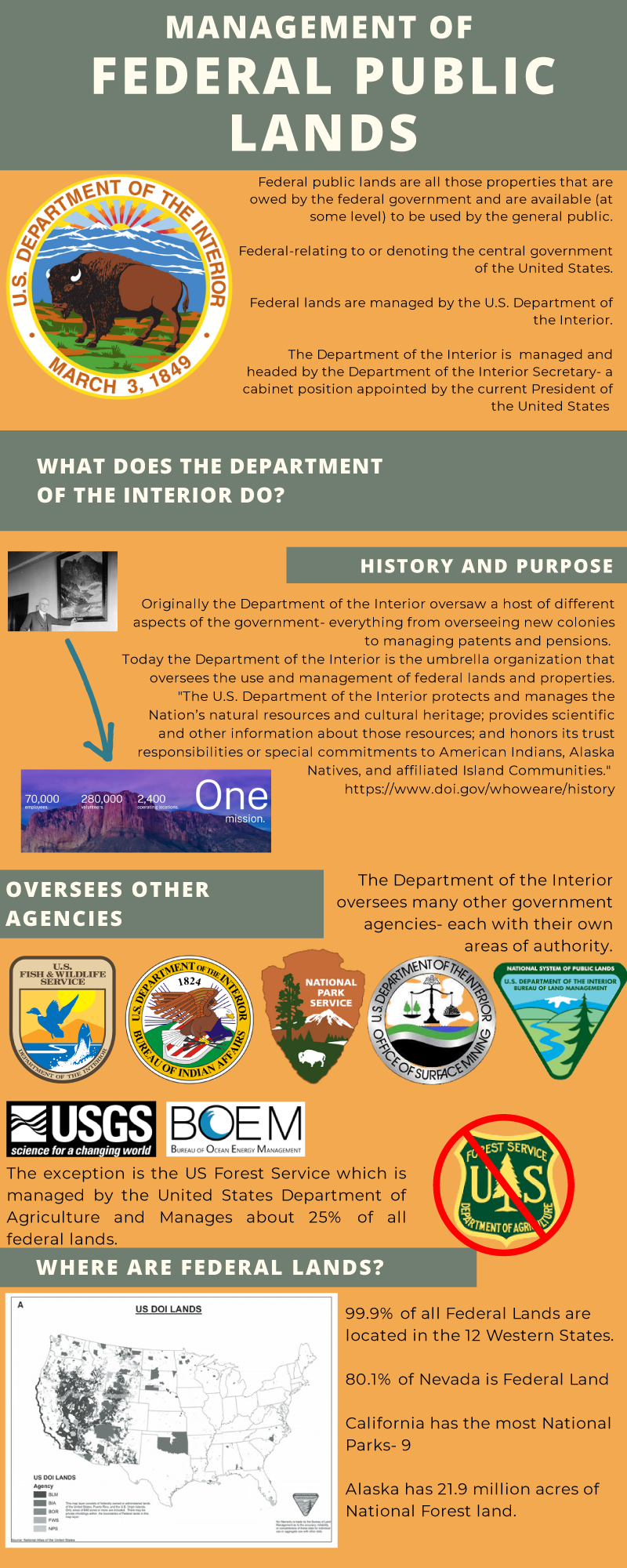
Federal Land Use: How we determine the best use for our public lands
In 2016 at the very end of his term in office, President Obama designated over 1.3 million acres of land in South Eastern Utah as a National Monument calling it Bears Ears. This land, which was previously managed by the Bureau of Land Management suddenly became a hotly disputed area. Ranchers who have grazed the area for over a hundred years were forced to sell off cattle as they no longer had anywhere to graze, tribes who consider the archeological sites sacred celebrated, oil and mineral extraction stopped, ATV and Off Road enthusiasts mourned the loss of some of their favorite rides, hotel and recreation owners nearby increased their online presence to include the word “Bears Ears”, hunters who had been awarded tags in the area panicked that the hunt they had planned and worked for would no longer happen, and the small communities surrounding the designated area both celebrated and despaired.
In 2017 the Trump administration announced he was reducing the size of both the Bears Ears National Monument and the Grand Staircase Escalante Monument. In October of 2021 the Biden Administration restored both monuments to the size outlined in the Obama announcement and increased the size of Bears Ears to 1.36 million acres. Currently the State of Utah has filed a lawsuit against the Biden Administration designed to have better control of the size of the monument and to better outline what agencies have control and authority over the massive chunk of land. What is allowed and what is not allowed in certain areas is still unclear to many. The size of the monuments, the communities that are invested in its preservation and use, and the future or the people involved in the decision and its long term impact are yet to be determined. This project hopes to invite students to consider how we determine what the best use is for our public lands, who should decide that, and the impacts on local communities of these kind of decisions. Students should form their own opinions and be able to gain a greater understanding of all the factors involved.
Alisha Neil
Alisha Neil works at Mountain Ridge High School in Herriman Utah. She is a mother to three children and happily married. She graduated from Utah State University in 2010 with a degree in Agriculture Education and has been working with urban and suburban students in Jordan School District since that time. In her spare time (when there rarely is any) she enjoys reading, working with horses, and baking.
Participant School & Location:
Mountain Ridge High School, Herriman Utah
Below is an interactive presentation on federal land management. You can click through, read slides and also watch and listen to several videos to learn about land management issues in our public lands.
Download a PDF of the infographic below.



